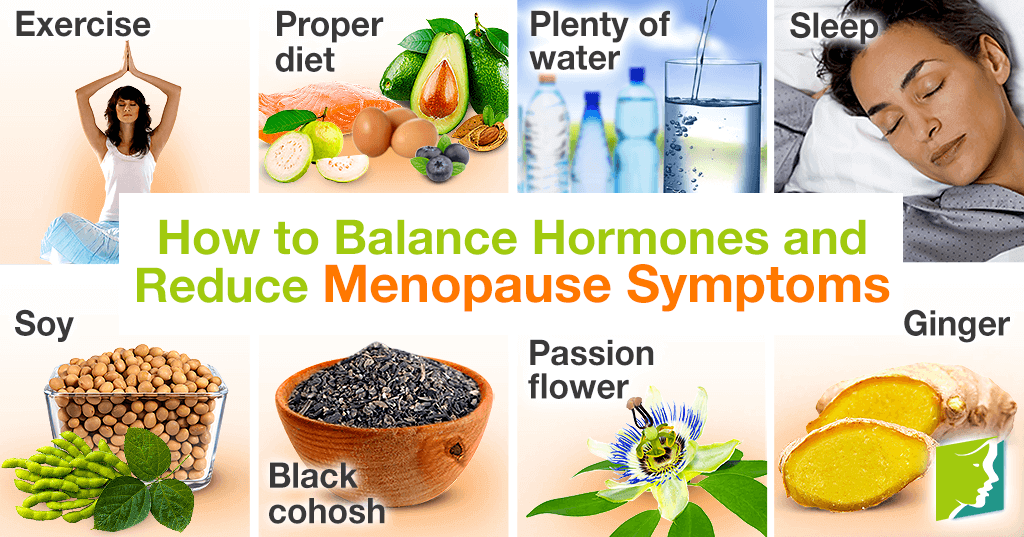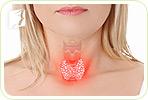Hormone imbalance - specifically of the sex hormones estrogen, progesterone, and testosterone - is the main cause of menopause symptoms in women. During menopause, a woman's levels of estrogen, progesterone, and testosterone fluctuate and then drastically decline. This decrease often causes a number of symptoms, including vaginal dryness, hot flashes, mood swings, and loss of libido. That being said, there are a number of ways to reduce menopausal symptoms.
Lifestyle Changes
Lifestyle factors like exercise, sleep, and proper diet are all crucial in looking and feeling your best.
Exercise
Getting plenty of exercise not only keeps you fit and healthy, but it has also been shown to help prevent many menopausal symptoms. The general recommended amount is around 30 minutes of aerobic exercise at least five times a week. Yoga, walking, swimming, and biking are all excellent low-impact workouts that can help reduce stress and boost energy levels. Exercise also helps prevent weight gain, headaches, and fatigue.
Proper diet
Maintaining a balanced and healthy diet is key to feeling and looking your best. Try to include plenty of protein, fiber, and raw fruits and vegetables into every meal. A few foods that have been known to help reduce menopausal symptoms because of their diverse nutrient content include salmon, eggs, avocados, almonds, spinach, kale, guavas, low-fat yogurt, and blueberries. It is recommended to eat healthy meals three times a day, in addition to small snacks every three to four hours in order to keep blood sugar levels up and prevent crashes.
Plenty of water
Water is vital for your body to function properly. Staying hydrated has also been shown to reduce certain menopausal symptoms like headaches, fatigue, and breast pain. The recommended daily amount of water intake is the equivalent of eight glasses.
Sleep
Getting plenty of sleep can be very effective in reducing menopausal symptoms like headaches, fatigue, and difficulty concentrating. Sleep also allows the body to recharge and strengthen its defenses against pain and illnesses. The average recommended amount of sleep is around eight hours.
Herbal Remedies
Herbal remedies are easy to incorporate in your daily routine. These are:
Soy
Soy has been a popular herb among menopausal women for decades, and it is known to help symptoms like hot flashes due to its content of phytoestrogens. Soy is also high in protein, which can help promote hair growth.
Black cohosh
Black cohosh contains plant-based estrogenic compounds, which can help restore hormone balance by increasing estrogen levels. Black cohosh has been used to treat menopausal symptoms like vaginal dryness, night sweats, and hot flashes.
Passion flower
Passion flower is a plant that has been used to treat sleep disorders, night sweats, anxiety, and gastrointestinal disorders.
Ginger
Ginger is high in nutrients and antioxidants, and also has anti-inflammatory characteristics. It is a well-known herb for its numerous medicinal benefits, including relief from nausea and gastrointestinal discomfort.
Hormone imbalance is the main cause of menopausal symptoms in women, so it is important to try and restore that balance. These methods featured in this article can help restore hormone balance and reduce menopause symptoms. Herbal remedies and lifestyle changes are cost-effective and easy to integrate into every day life.
Sources
- National Center of Complementary and Alternative Medicine. (2012). Black Cohosh. Retrieved August 4, 2014, from http://nccam.nih.gov/health/blackcohosh/ataglance.htm
- National Center of Complementary and Alternative. (2012). Menopausal Symptoms and Complementary Health Practices. Retrieved August 4, 2014 from http://nccam.nih.gov/health/menopause/menopausesymptoms
- National Center of Complementary and Alternative Medicine. (2012). Soy. Retrieved August 4, 2014, from http://nccam.nih.gov/health/soy/ataglance.htm
- Office on Women's Health. (2010). Menopause. Retrieved August 4, 2014, from http://womenshealth.gov/menopause/symptom-relief-treatment/natural-alternative-treatments-lifestyle-changes.html




